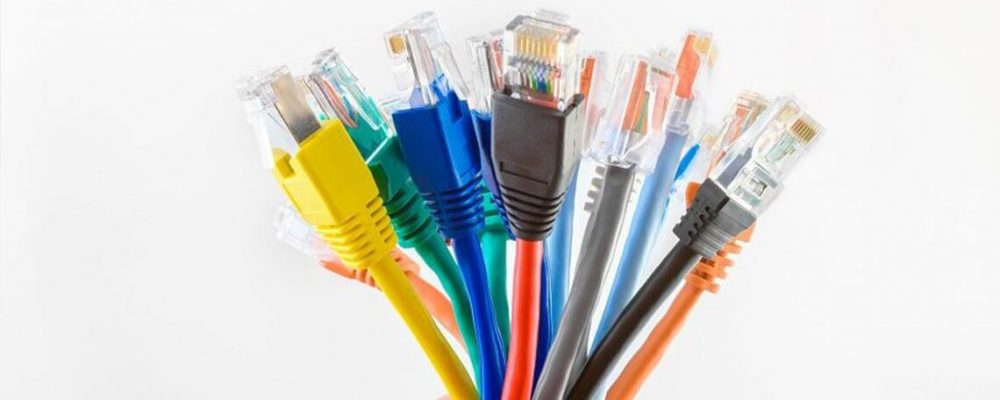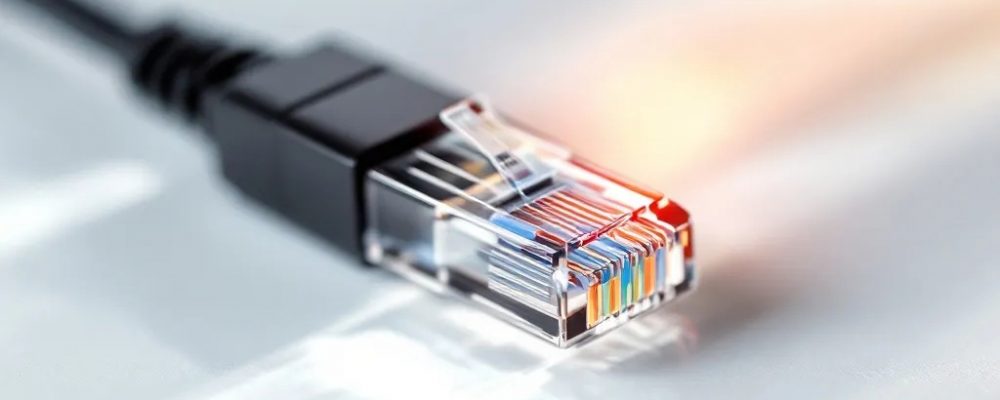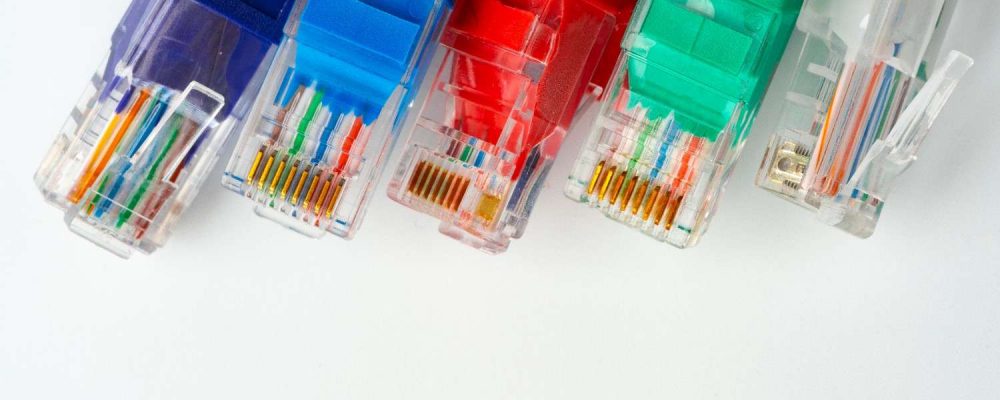Summary : Internet cable connector types vary based on speed, compatibilSummary: Internet connectors vary by speed, compatibility, and use. These serve different needs, from a home network environment to an enterprise infrastructure setup. Understanding these connectors allows one to find adequate options of cable solutions to enjoy a reliable Internet connection, fast data transfer, and seamless connectivity. This guide simplifies the types of connectors for Internet cable applications, helping you with network setup and troubleshooting.ity, and application. The most common include RJ45 for Ethernet, coaxial for broadband, fiber optic for high-speed data, and USB for plug-and-play connections. Each serves different needs, from home networking to enterprise infrastructure. Understanding these connectors helps you choose the right option for reliable internet performance, faster data transfer, and seamless connectivity. This guide simplifies internet cable connector types and their uses, making network setup and troubleshooting easier.

During IT infrastructure set-ups and upgrades, the conversation revolves around bandwidth, devices, and cloud adoption. However, for any network to be viable, whether it supports a law firm in New Jersey or is spread across different floors in a manufacturing company in Pennsylvania, it remains another word for the cable connectors. These tiny, often ignored pieces act as a bridge between your cabling and perhaps the hardware. If the connectors are selected incorrectly, even the best CAT6 cabling or fiber runs may not yield really good results.
This document explains the main types of internet wire connectors, their specific applications, and the consequences of making the right choice for business operations. Consider that your untechnical, practical walk-through should help you in any real procurement or infrastructure decision.
Internet wire connectors are not “just accessories.” They decide:
When companies invest in structured cabling or office wiring projects, the types of connectors used will determine how the network can be scaled and how resilient it will be over the next decade.

Connectors can be divided into three major groups:
Let’s see them more in-depth.
The main data transmission of fiber optic cable is light pulses; hence, it can support much higher bandwidths and transmission speeds. Fiber connectors mount the fibers and must align microscopic glass cores with extreme precision.
SC connectors are widely used in enterprise backbones where reliability and scalability matter. Their push-pull latch design also helps reduce wear on the ports when reconnections must be carried out very often.
Perhaps less used in today’s high-density racks, these ST connectors find their use in the manufacturing and industrial setups where vibration and dust resistance are needed.
Because of their threaded locking system, FC connectors enjoy favor in mission-critical businesses that cannot tolerate even a transient signal loss.
Connector | Coupling Type | Key Strength | Typical Use Cases |
SC | Push-pull | Easy installation, reliable | Data centers, telecom |
ST | Bayonet twist | Rugged durability | Industrial/campus networks |
FC | Screw-on | High stability | Aerospace, defense, labs |
Twisted-pair cables carry Ethernet lines through pairs of twisted, insulated copper wire. Connectors terminating these cables define whether the cable transports voice-only signals or data up to gigabit speeds.
RJ45 is the worldwide standard of LAN connections. From patch panels in corporate offices to keystone jacks at employee desks, RJ45 is another word for Ethernet.
It still finds its use in commercial setups with analog phone lines, although it is slowly becoming extinct in IP-based telephony arrangements.
While rarely seen in networking, RJ12 remains a good choice in industries that maintain PBX phone systems.
Connector | Pin Count | Typical Cable | Typical Use Cases |
RJ45 | 8P8C | Cat5e, Cat6, Cat6A | Ethernet, VoIP |
RJ11 | 6P2C / 6P4C | Cat3 / phone lines | Landline, fax |
RJ12 | 6P6C | Phone cabling | Multi-line telephony |
In RF and television applications, coaxial cables have a central conductor shielded by dielectric insulation with an outer conductor. The connectors maintain proper impedance matching, avoiding any reflection and signal degradation.
BNCs are found in surveillance camera systems and laboratory equipment requiring high-frequency connections.
These connectors are useful where one feed has to serve several devices.
F-type connectors continue to be the workhorses of residential and small business coaxial installations.
The N-type connector is being heavily used in outdoor and high-frequency applications.
Connector | Coupling | Key Strength | Typical Use Cases |
BNC | Bayonet | Quick connect, stable | CCTV, RF labs |
T-Type | Splitter | Signal branching | Cable TV splits |
F-Type | Screw-on | Simple, reliable | Satellite, cable broadband |
N-Type | Threaded | Durable, weather-resistant | Wireless, cellular |

The correct connector-type selection relies on the network it is helping. As given here:
A factory connector is more than putting wires together by crimping. Correct installation requires:
For businesses in New Jersey and Pennsylvania, entrusting experienced providers such as Network Drops means these connectors are selected correctly, installed, tested, and certified for long-term reliability.

Internet cable connections have applications ranging from industrial automation to residential networking. Understanding these pragmatic uses is vital for formulating and executing effective network infrastructure.
In an established home networking setup, RJ45 connectors link PCs, printers, smart TVs, and other devices to a main router or modem. These connectors provide family members seamless networking by allowing local file sharing and high-speed internet access.
The number of internet-connected instruments in modern houses has grown, making a demand for high-speed and dependable networking solutions. Meeting the diverse requirements of today’s households requires a strong home network infrastructure. It can handle anything from online gaming and streaming movies to house automation and remote work.
Internet wire connectors in offices help staff members collaborate and communicate with one another. Computers, servers, network switches, and other networking hardware are connected using RJ45 connectors. Fiber optic cables can also make high-speed connections over large distances and between data centers.
It is unbelievable to overstate the significance of having a solid and well-planned office network, particularly as businesses increasingly rely on digital instruments to encourage creativity and efficiency. Maintaining procedures and remaining competitive requires a robust network configuration. It enables remote work, streamlines communication and data exchange, and makes cloud-based apps feasible.
In industrial Ethernet networks, fiber optic connectors link automation devices such as sensors and PLCs. Coaxial cable connectors can also transmit video signals in monitoring and surveillance systems.
Among the sectors that depend on industrial automation to improve productivity and enhance operational efficiency are:
Dedicated internet connectors and top-notch networking technology may allow industrial companies to increase productivity, reduce downtime, and enhance safety.
Network Drops recognizes the value of dependable connectivity in today’s connected world. We offer the know-how and resources to satisfy your networking needs, whether you’re optimizing industrial automation systems, updating your office infrastructure, or setting up a home network. Our team’s areas of expertise as certified technicians are customized network solution design, installation, and maintenance. Put your trust in Network Drops for all your networking requirements and discover the transformative power of superior connectivity.
Connectors may be small, yet they carry the weight of entire networks. Whether RJ45 jacks would go in an office cubicle, SC connectors in a telecom rack, or N-type fittings on a wireless antenna, these are the levers that transform the network from being there to 100 percent reliable.
Choosing the right connector means choosing infrastructure capable of supporting the demands of today and tomorrow’s bandwidth. And when correctly installed with Network Drops, businesses will save themselves from the associated downtime cost of rework from faulty installations.
The 8 pin kind of RJ45 connector is standard for Ethernet. They must be used for a Cat5e, Cat6, or Cat6a cable.
F-type connectors are used for cable internet and cable TV cables. It allows signals to go through at high frequencies.
The main types are:
Each serves a different need based on speed, distance, and the surrounding environment.
RJ45 is the most common type of connector used in residential and commercial Ethernet networks.
The steps are:
Use a crimping tool to crimp down on the connector for a secure fit.
"*" indicates required fields
Scott Fcasni is the driving force behind Shock I.T. Support’s commercial datacomm cabling division, delivering expert solutions that power reliable, high-performance network infrastructures. With extensive experience in structured cabling and a commitment to precision, Scott ensures that every project—whether for small businesses or large enterprises—meets the highest standards of quality and scalability.